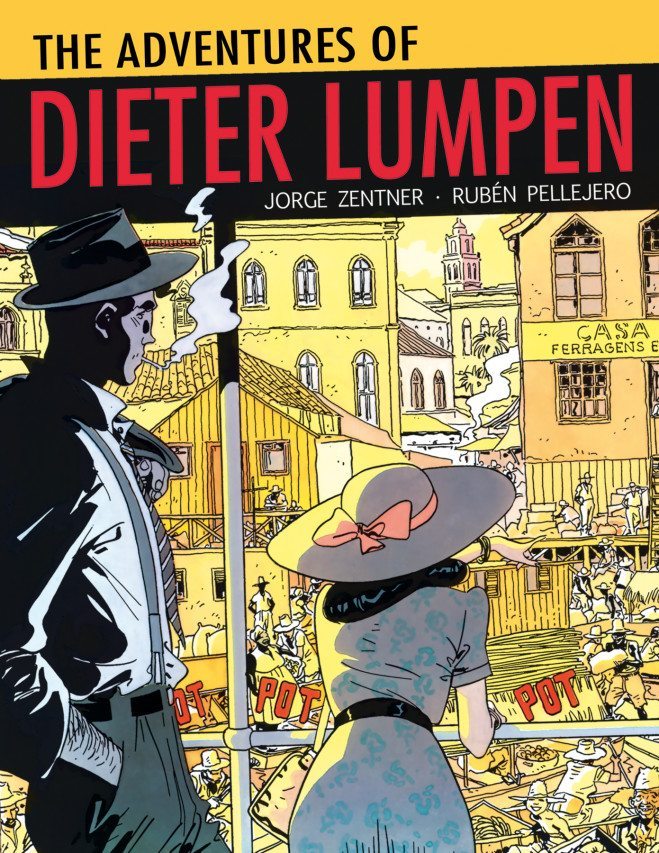RM Rhodes presents commentary on The Adventures of Dieter Lumpen by Jorge Zentner and Ruben Pellejero
—————————————————————————————————
Jargon is awesome. Comics has a lot of it. One of the more interesting terms is the artistic technique of spotting black areas. This is often shortened to “spotted blacks”. That is, determining what areas of a given page and/or panel should be inked in before color is applied. It’s one of many artistic techniques one can pick up while making comics. To date, I haven’t picked it up.
But I know what to look for, which means I can appreciate it when I see it. There’s an entire group of arguments whose style relies heavily on spotted blacks, if you want to look for examples. The most obvious is Hugo Pratt, whose Corto Maltese series is a masterwork of the style. Milo Manara, who worked with Pratt, has a much more elegant line, but the blacks give his linework its characteristic solidity. Frank Miller was inspired by Pratt and even named an island in Dark Knight Returns after Corto Maltese.
Tim Sale provided the forward for the recent collection of The Adventures of Dieter Lumpen by Jorge Zentner (writer) and Ruben Pellejero (artist). To bring the whole thing around full circle, Pellejero was recently chosen to be the artist on a reboot of Corto Maltese.
The Adventures of Dieter Lumpen is the best series of stories I’ve read in Heavy Metal, by far. I was very excited when IDW announced that they were printing a collection, including material never printed in English before. For the record, that’s three short stories – Time Bomb, His Master’s Voice, and A Question of Skin – and the long story The Reaper’s Price. All of the other stories were printed in Heavy Metal between 1987 and 1990.
One story – Games of Chance – was only printed in black and white in Heavy Metal and is printed in color in the collection. Reading that story in black and white helped me see how good Pellejero’s spotted blacks are. He relies very heavily on shadow and profile to add drama.

After the initial batch of short stories, there are three longer ones. The short stories are clearly written to be serialized in anthologies – the staple serialization format in European comics markets. The longer stories could be printed in standalone albums, which drives the tone and complexity of the series. The shorts are wrapped around a single location or idea and the longer ones have much more complex themes because they have room to breathe and stretch out.
Pellejero uses color and a confident line to build on top of a very solid foundation. The real appeal of the series are the settings. The premise is that shortly after the war, a German named Dieter Lumpen gets a job as a chauffeur and the first page of the first story finds him being chased through an Istanbul market by a man with a gun. From there, he travels to the Agean, Haifa, India, Sri Lanka, Paris, Manaus, Tunisia and the Caribbean.
The appeal of these destinations is Pellejero’s ability to render them almost like a documentary film maker, matter of fact about amazing sights, which adds verisimilitude. The amount of detail on each page means that every time you return to a page, you notice something new. And the stories are very rereadable.
To be sure, these are the adventures of a white European wandering through the wreckage of a post-war world. The nationality of the main character isn’t really brought up, and the backstory is never explored. He was clearly old enough to serve in the war and somehow managed to walk away without any physical injuries. He’s now wandering the back corners of the non-white portion of the world, somehow miraculously encountering the only white people in the area. It’s a world that’s right on the cusp of post-colonialism and the tensions are on the page.

Not everyone is ready to stop fighting – Lumpen finds himself caught up in revolutionary actions in Palestine, India and Tunisia. In almost every story, he (or a companion) are looking for something. And, almost inevitably, there is some kind of violence along the way. In every case, Lumpen is a reluctant hero, mostly running away from confrontation whenever possible.
Even the most peaceful story, Caribbean, has some violence. We find Lumpen living in relative obscurity in the Caribbean (duh), only to have his peace shattered by the arrival of a film crew. He agrees to act as the lead actor in the pirate movie they are there to shoot.
The entire process of making a film is wonderfully compressed into two pages. In Heavy Metal, these were printed as a two page spread. In the collection, they are back-to-back, which somewhat ruins the effect.
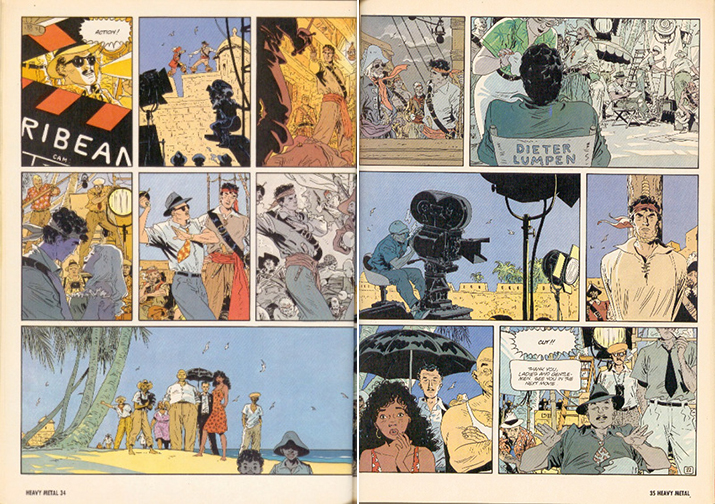
It’s easily the best story in the collection. It’s the second of the longer stories and it is very much about a man giving away a chance at fame. As a mediation on celebrity and stardom, it’s very effective. There is a mix of action and pensiveness through the whole series and this story rests on the search for a quiet place to grow old in peace.
The Reaper’s Price, the final story in the collection, is a real beast. It’s longer than any of the other stories and is a distinct departure from the rest of the series. Most obviously, every other story is about a specific place. This one features Lumpen travelling to multiple locations. It’s also presented in such a way that leaves the reader unclear if the story is real or some kind of dream.
There are elements that could be described as supernatural or mystical throughout the series, and at least one of the shorts is a ghost story. But all of those genre elements were grounded in a distinctly real narrative. This story contains a number of deeply allegorical elements. And the art style changes to suit the situation, making it the most complex story in the collection artistically and conceptually.
If you want a solid comic from a pair of European masters, The Adventures of Dieter Lumpen is highly recommended.
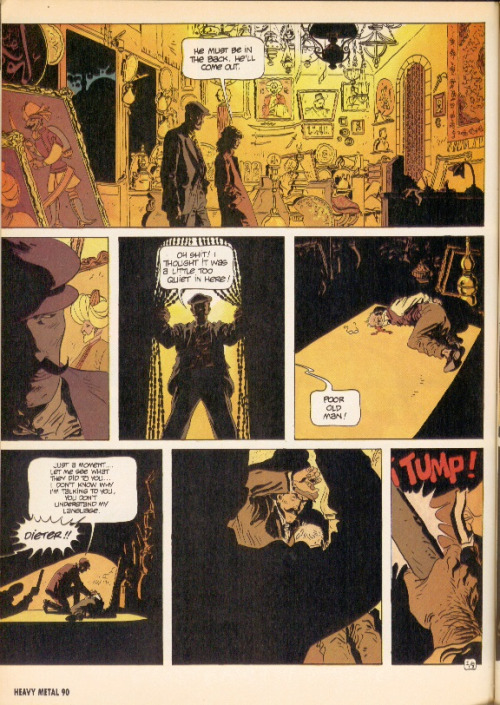
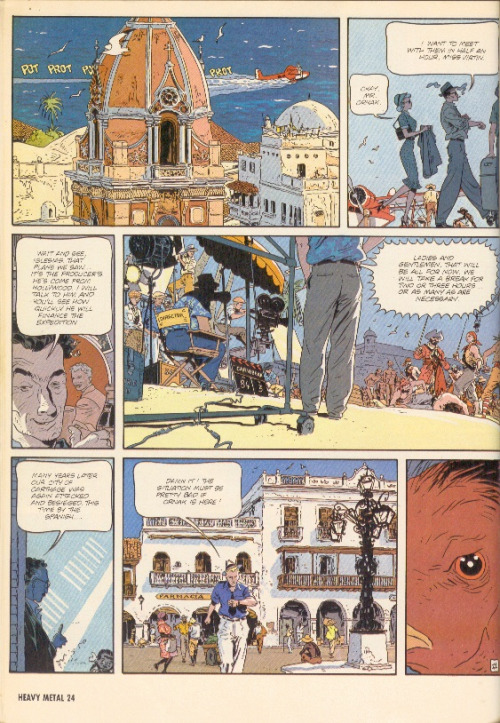

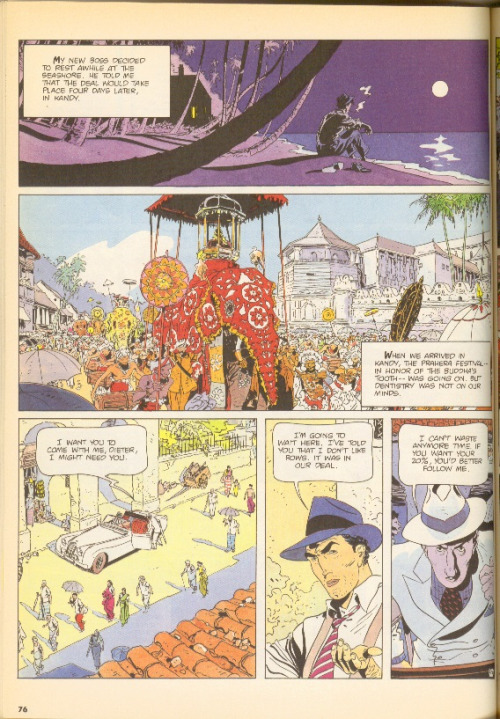
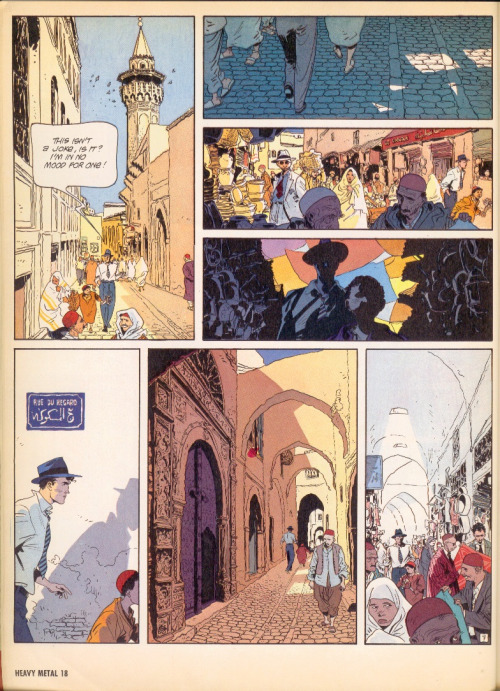
—————————————————————————————————
RM Rhodes is the curator of the Heavy Metal Magazine tumblr. He lives and works in Washington, D.C. His current project is a weekly online anthology called The Rumor published on the Comics Workbook tumblr – see issues of it HERE. Check out more of his comics at Louis Deux.
